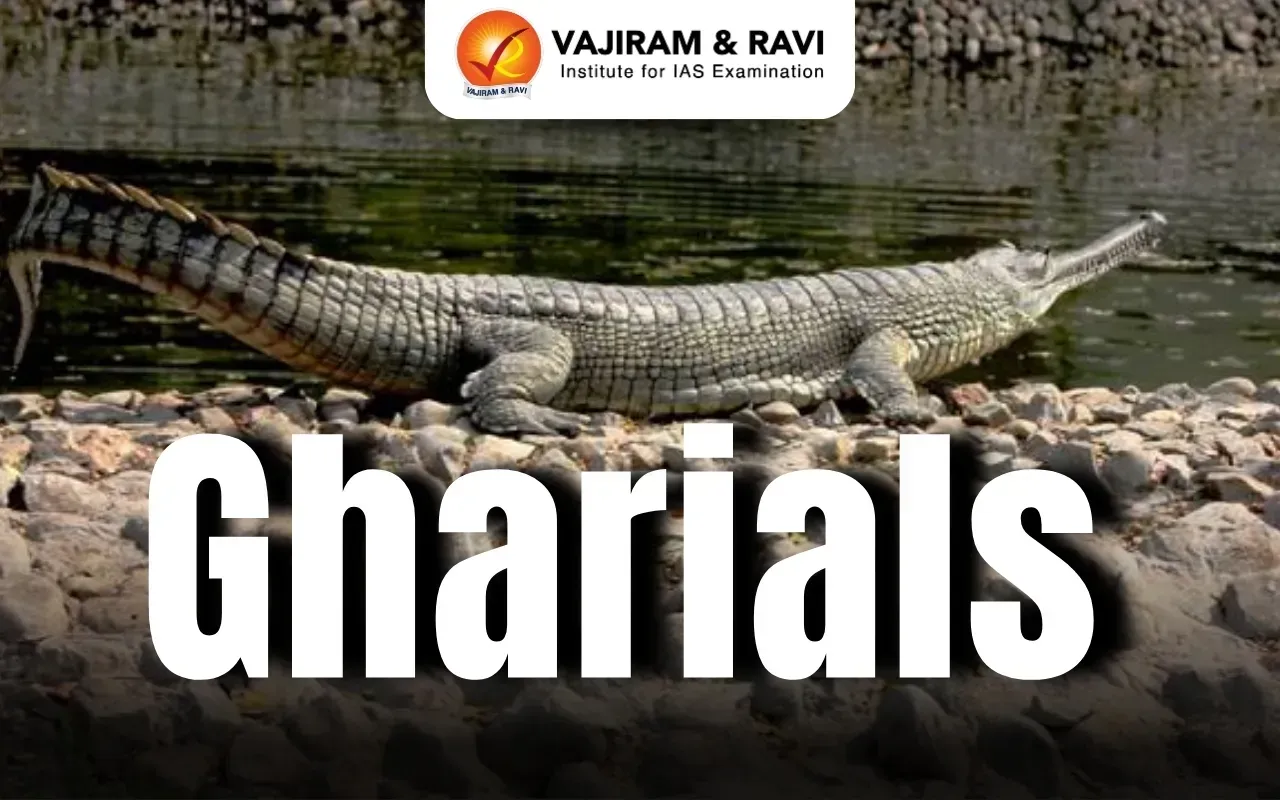Gharials
27-02-2025
06:12 AM
1 min read

Gharial Latest News
Recently, the Madhya Pradesh Chief Minister released 10 gharials into the Chambal river at the National Chambal Gharial Sanctuary in Morena.

About Gharials
- It is a freshwater crocodile belonging to the Crocodylia Order and Crocodylidae Family.
- The name ‘gharial’ comes from the Hindi word ghara, meaning pot or vessel, referring to the bulbous snout tip of adult males, which resembles an inverted pot.
- Distribution: Its range spanned the rivers of Bangladesh, Bhutan, India, Myanmar, Nepal, and Pakistan.
- Their major population occurs in three tributaries of the Ganga River: the Chambal and Girwa Rivers in India and the Rapti-Naryani River in Nepal.
- The Gharial reserves of India are located in three States: Uttar Pradesh, Madhya Pradesh, and Rajasthan.
Features of Gharials
- It is one of the largest crocodilian species, with males reaching 16 to 20 feet (5 to 6 meters) in length. Females typically grow to lengths of 11.5 to 15 feet (3.5 to 4.5 meters).
- They have thick skin covered with smooth epidermal scales that do not overlap.
- The snout of the gharial is uniquely the thinnest and most elongated among all the crocodilians.
- In addition, the adult males sport a large bulb at the tip of their snout, called the 'ghara'.
- It is also the most aquatic of all crocodilians, for it never moves far from the water.
- Reproduction: They mate during November–January and lays eggs March–May.
- Threats: Overhunting for skins, trophies, eggs, and traditional medicine
Conservations Status of Gharials
- IUCN: Critically endangered
- CITES: Appendix I
- Wildlife (Protection) Act, 1972: Schedule I
Gharial FAQs
Q1. What is the IUCN status of gharial in India?
Ans. Critically Endangered.
Q2. Which river is famous for gharial?
Ans. Chambal River
Q3. Which national park is famous for gharial?
Ans. The National Chambal Sanctuary
Source: IE
